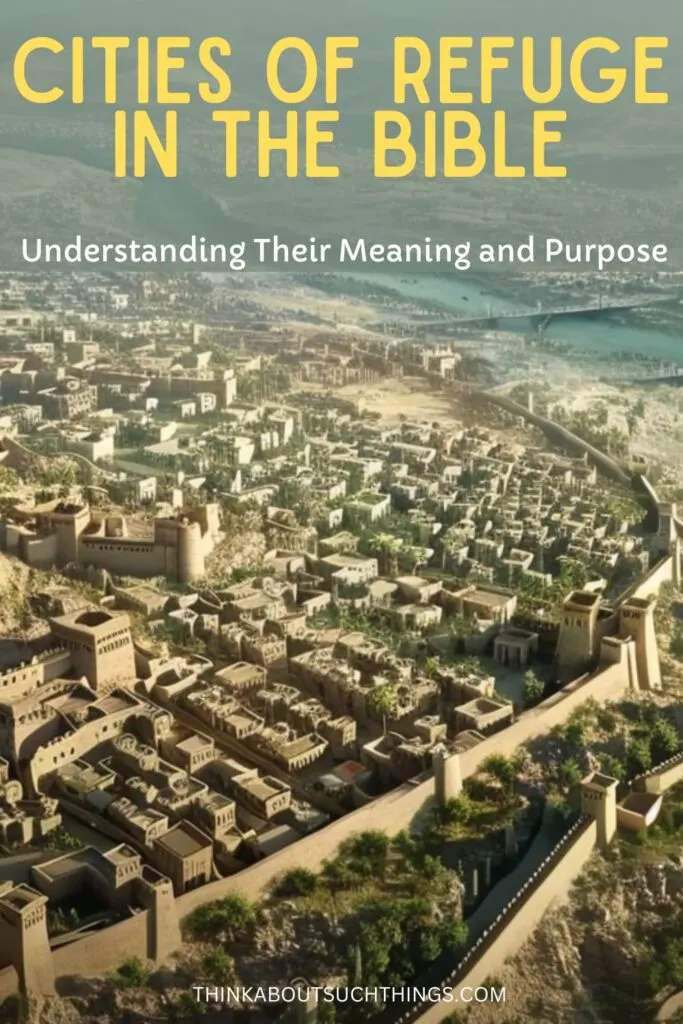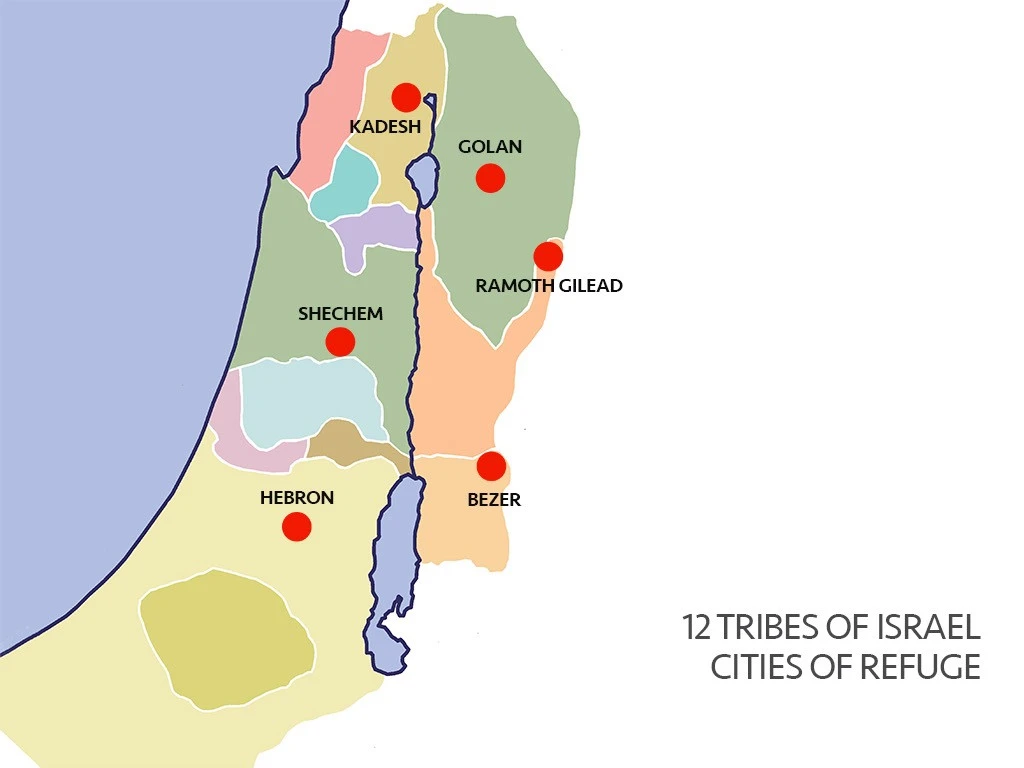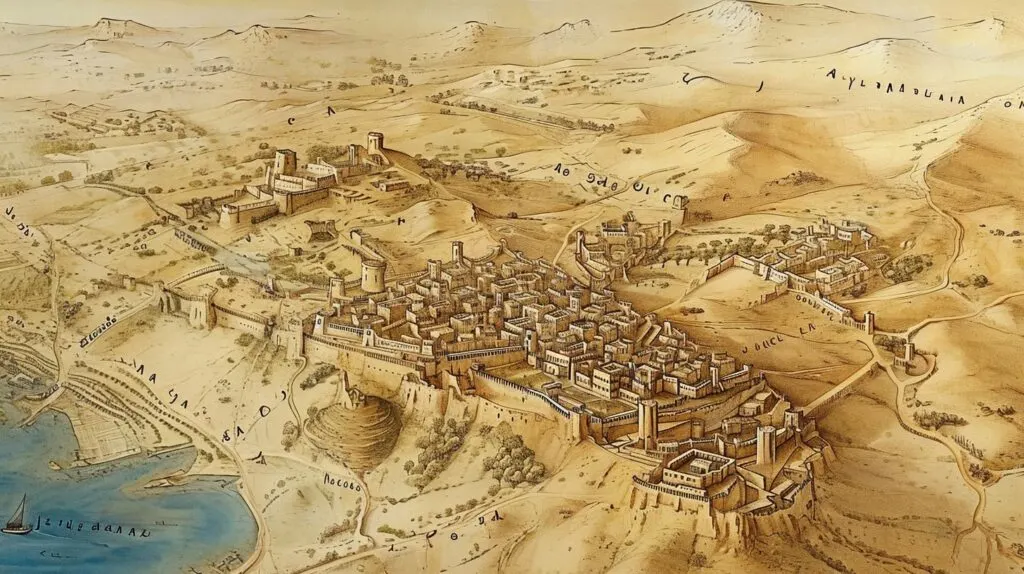Modern believers often view the law as something unattainable (which, to some extent, it is) and holy, with little or no provision for human failures. But that’s not entirely true. In fact, God made many provisions to accommodate people’s weaknesses.
As Christians, we know that we should see the law as a guide of what is perfect, and Jesus fulfilled the law in its entirety to make provision for our weakness.
But even in the law itself, God provided many ways to show His love and mercy when we fail. The six cities of refuge were excellent examples of this.
But what were the cities of refuge, and what can we learn from them?
Key Takeaways
• The cities of refuge were established by God as safe havens for people who committed manslaughter unintentionally.
• They protected people from revenge killing and provided an opportunity to stand trial and prove innocence.
• If found innocent, the person could live in the city until the high priest died without fear of harm.
• This demonstrated God’s mercy, love and compassion even within the structure of the law.
• The cities of refuge foreshadowed Christ as our refuge. When we seek shelter in Him, we are free from condemnation and the accusations of the enemy.
• Just as the death of the high priest set the refugees free, Christ’s death liberates us from guilt and judgment.

What is the Origin of the Cities of Refuge?
We see God telling Moses about the cities of refuge in Numbers 35:9-34. The word “refuge” comes from the Hebrew word “miqlat” (Strong’s number H4733), which means “asylum.”
מִקְלָט miqlâṭ, mik-lawt’; from H7038 in the sense of taking in; an asylum (as a receptacle):—refuge.
God’s instructions for the cities of refuge were as follows:
- The Levites (the tribe dedicated to the priesthood and religious service) received no inheritance of land as the other tribes did. Instead, they were given cities throughout Israel to inhabit (Numbers 35:1-8).
- Six of these cities were to be established as cities of refuge, three located to the west and three to the east of the river.
(Some scholars believed that most, or even all, of the Levitical cities were designated as cities of refuge at some point, but God’s instruction was that there should be six.) - These cities were to be safe havens for people who committed manslaughter, killing someone by accident and with no ill intent.
Verse 12 says, “The cities shall be for you a refuge from the avenger, that the manslayer may not die until he stands before the congregation for judgment.” - According to verse 24, the manslayer would stand to be judged by the congregation (the Levites who inhabited the city).
If they found that he killed unintentionally, he would be welcome to stay there and would not be delivered into the hands of the avenger. - He could not leave the city at any time until the current high priest died. After this happened, he would be free to return to his home, and the avenger would not be allowed to do him harm.
Joshua 20:7-9 tells us that the Israelites chose 6 cities:
| City of Refuge | Location | Hebrew Meaning Of The Name |
|---|---|---|
| Kadesh | West of the River | Holy Place |
| Shechem | West of the River | Back or Shoulder |
| Kiriath Arba or Kirjatharba (Hebron) | West of the River | City of Arba/ Seat of Association |
| Bezer | East of the River | Gold Ore or Stronghold |
| Ramoth Gilead | East of the River | Heights and Heap of Testimony |
| Golan | East of the River | Captivity |

Why Did God Allow for Cities of Refuge?
In the Old Testament, Israel’s law was based upon the precept of “an eye for an eye” (also known as “lex talionis”).
By that law, whatever someone did to you, you could repay in the same way.
For example, if someone killed a loved one, you were allowed to exact revenge by killing the person who killed them (similar to the death sentence but executed by the friends or family of the deceased).
The problem is that accidents happen. We all know of situations where someone did something that unintentionally ended in someone’s death.
This could be caused by negligence, like a car accident resulting from drunk driving, but it could also be purely accidental.
God allowed cities of refuge to provide for these failures and unintentional sins. Numbers 35 gives an extensive list of ways to determine if a killing is to be regarded as murder or manslaughter, but it comes down to intent.
For example, if someone was lying in wait, they intended to kill that person, which would be considered murder.
From this, we can conclude a few reasons why God allowed it:
- To avoid someone killing a potentially innocent person in a moment of anger.
If the accused managed to flee to a city of refuge, the accuser would not be able to take revenge immediately, possibly stopping them from committing sin themselves by executing an innocent person. - To show God’s love and compassion, even for sinners.
The cities of refuge offered people who made mistakes the opportunity to live.
To help bring people closer to God. These people, who committed what could be considered the greatest sin, were essentially forced to live in what we could compare to a monastery.
These cities were inhabited by the devout tribe of Levi, people whose entire lives were dedicated to serving God and ministering in the temple.
Seeing that devout lifestyle as your example every day would likely bring people closer to God and motivate them to live a life of holiness.
Essentially, the cities of refuge symbolize God’s love, mercy, grace, and compassion for people. It’s one of the provisions He made in the law for people to escape the consequences of their actions, as long as they weren’t intentional and deliberate.
Even though people see God as a God of judgment in the Old Testament, He already showed love, mercy, and patience.
What Can We Learn from Cities of Refuge in the Bible?

It’s interesting to note that one of the cities, Shechem, was the site where the tribe’s patriarch, Levi (one of the sons of Jacob), killed an entire family with his brother, Simeon.
They did it to take revenge when a young man raped their sister, but Jacob later cursed their anger and the murderous actions it led to.
Now, centuries later, the tribe of Levi would inhabit this city and dedicate it as a refuge for manslayers to escape the anger and wrath of those who have a right to kill them.
There’s something almost poetic in that, and it reinforces the image of God doing everything He can to draw people to repentance and give them another chance to improve their lives.
But the cities of refuge were a symbol or prophecy of Jesus!
Looking back at the Old Testament, the law allowed for anyone who killed someone else to be killed immediately. If the accuser managed to catch the killer, they could execute them without repercussions, even if the killing happened by accident.
The cities of refuge were a way for the “innocent” to escape their legal execution if they were indeed innocent.
We know that we are all guilty based on God’s standards. None of us are innocent by any standard. True, we may have never killed anyone (on purpose or by accident).
Still, Jesus clarified God’s standards by mentioning that even someone who hates another person is already guilty of murder (1 John 3:15 and Matthew 5:21-22).
By the standards of God, as Jesus clarified them, there is no hope for any of us to escape God’s judgment or wrath.
But just as God understood human weakness and provided cities of refuge to accommodate Israel’s failures, He also understood that there’s no way any human would ever be able to meet His standards of holiness and righteousness.
That’s why He sent Jesus, fully God yet fully man, to fulfill His requirements of holiness and then to pay the price for all of us. Jesus Christ became our city of refuge.
When we become aware of our own failings and imperfections, we can find protection and perfection by seeking shelter in Him. We partake in His righteousness and become righteous ourselves.
When we are in Him, the accuser can no longer accuse us (Romans 8:1). We are no longer condemned.
Those who were guilty of manslaughter had to remain in the city of refuge until the high priest died, after which their guilt was cleared, and nobody would be allowed to take revenge by killing them.
Well, we have the great High Priest, Jesus Christ (Hebrews 4:14), who died 2,000 years ago.
Since then we have a great high priest who has passed through the heavens, Jesus, the Son of God, let us hold fast our confession.
Through His death, we are not just living as exiles in a city of refuge, but we are entirely free and guiltless. Praise God!!
The cities of refuge were established to keep people safe from vengeance if they did something wrong by accident.
But people had the choice to return home and live free once the high priest died.
Yet I can imagine many were hesitant to do so out of fear that the deceased’s family would still want to take revenge.
That’s still true today. Our great High Priest already died, clearing our names and setting us free.
Yet many of us still live in fear of God’s judgment or attacks from the enemy, keeping us from living our lives as God intended.
It’s time for us to move out of the mindset of “I’m unholy and deserve judgment” and start to enjoy the extraordinary grace of God in humility and thankfulness.

Melissa is a passionate minister, speaker and an ongoing learner of the Bible. She has been involved in church and vocational ministry for over 18 years. And is the founder of Think About Such Things. She has the heart to equip the saints by helping them get into the Word of God and fall more in love with Jesus. She also enjoys family, cooking, and reading.
She has spoken in churches in California, Oregon, Texas, and Mexico and has been featured in Guidepost Magazine and All Recipes Magazine. Read More…
